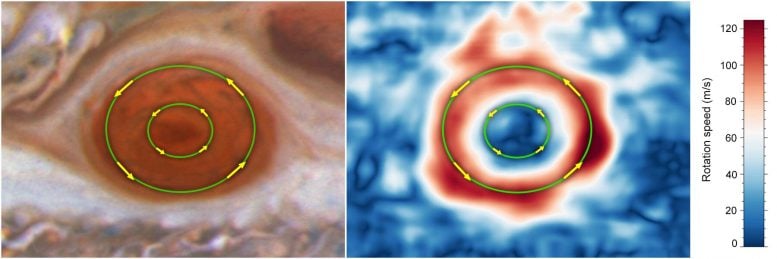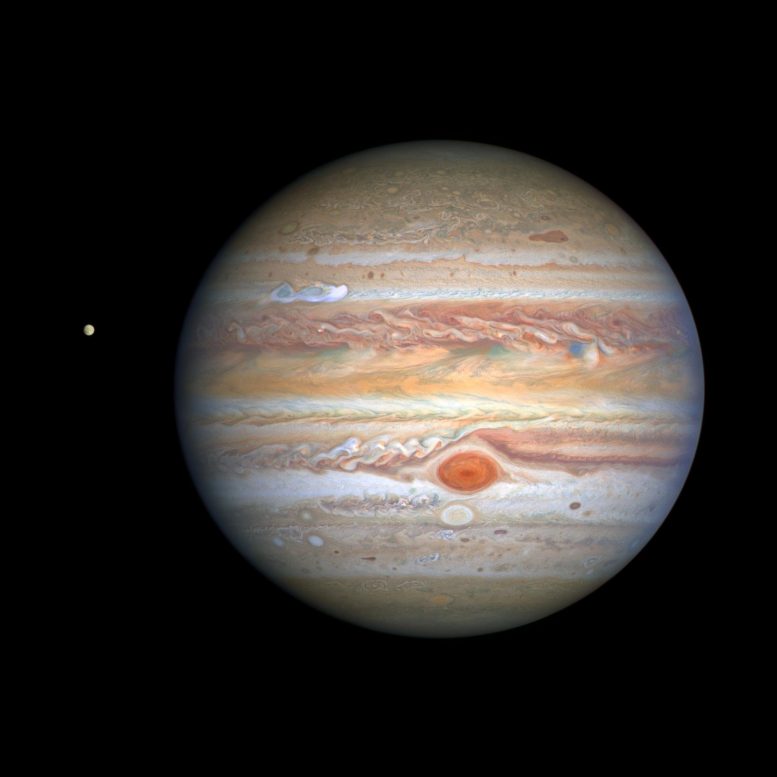
By analyzing images taken by the NASA/ESA Hubble Space Telescope between 2009 and 2020, researchers found that the average wind speed just within the boundaries of the Great Red Spot, set off by the outer green circle, have increased by up to 8 percent and exceed 640 kilometers per hour. In contrast, the winds near the storm’s innermost region, set off by a smaller green ring, are moving significantly more slowly. Both move counterclockwise. Credit: NASA, ESA, Michael H. Wong (UC Berkeley)
The Winds at the Outer Edge Are ‘Winning the Race’ in This Enormous Storm System
Listen up, race fans! The innermost lane no longer has a predictable advantage. In
Like the speed of an advancing race car driver, the winds in the outermost “lane” of Jupiter’s Great Red Spot are accelerating – a discovery only made possible by This latest image of Jupiter, taken by the NASA/ESA Hubble Space Telescope on 25 August 2020, was captured when the planet was 653 million kilometers from Earth. Hubble’s sharp view is giving researchers an updated weather report on the monster planet’s turbulent atmosphere, including a remarkable new storm brewing, and a cousin of the Great Red Spot changing color — again. The new image also features Jupiter’s icy moon Europa. Credit: NASA, ESA, STScI, A. Simon (Goddard Space Flight Center), M.H. Wong (University of California, Berkeley), and the OPAL team













